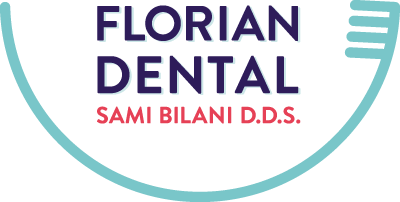Carbohydrates are furnished by the following food groups:
- Milk
- Grain
- Fruits
- Vegetables
The only animal foods supplying significant quantities of carbohydrate are milk and milk products, which furnish the disaccharide lactose. In cheese making, the lactose is removed as a by-product. Consequently, most cheeses contain only trace amounts of lactose.
Other sugars are furnished by table sugar, syrups, jellies, jams, and honey. Sugars are incorporated into many popular foods (e.g., candy, beverages, cakes and desserts, chewing gum, and ice cream). Only about 25% of the sugar Americans consume is added to foods in the home and by institutions and restaurants; the remainder is added to foods during processing and in canning and freezing. During processing, sugar is added to:
- Breakfast cereals
- Condiments and salad dressings
- Soft drinks
- Cookies, crackers, and candies
- Flavored extracts and syrups
- Flour and bread products
- Milk and milk products
- A significant amount of added sweetener intake is from regular soft drinks.
Approximately 18% of the caloric intake is from naturally occurring sugars in fruits and vegetables. (This amount does not include sugar in milk.)
Sugars, mainly glucose and fructose, are furnished in fruits and vegetables in varying amounts depending on their maturity (ripe bananas contain more simple sugars than green bananas) and their water content (spinach contains less carbohydrate than potatoes).
Three of the Dietary Guidelines for Americans 2005 address sugar intake; each encourages limiting intake. Because there is no physiological requirements for added sugars, MyPyramid does not include a separate panel for sugars; added sugars are included in the discretionary kilocalories because they contain only kilocalories. Eating sugar in moderation implies appropriate balance among foods or nutrients is the overriding consideration in food selection.
Complex carbohydrates or starches are furnished by grain products (wheat, corn, rice, oats, rye, barley, buckwheat, and millet). Some vegetables, especially root and seed varieties (potatoes, sweet potatoes, beets, peas, and winter squashes), also contain considerable amounts of starch. Legumes, or dried beans and peas, are excellent sources of complex carbohydrates.
Dietary fiber, especially hemicellulose and cellulose, is furnished by whole-grain breads and cereals. Cellulose is found principally in the stems, roots, leaves, and seed covering of plants; unpeeled fruits and leafy vegetables are good sources. Legumes are also a good source of dietary fiber. The pectin contributed by fruits and vegetables is an important source of viscous fiber. Small amounts of resistant starches occur naturally in under-ripe bananas, navy beans, lentils, barley, and whole-grain breads. A popular American snack food, popcorn (preferably without butter and salt), is also whole-grain food.
DIATARY FIBER CONTENT OF SAMPLE MENU
Sample Menu Dietary Fiber Content (g)
Breakfast
Oat-bran bagel (1) 2.1
Whipped cream cheese (2Tbsp) 0
Seedless raisins (1/4 cup) 1
1% low-fat milk (8oz) 0
Coffee (12oz) 0
Morning Snack
Fresh orange (1) 4.4
Lunch
Sandwich
Tuna salad (1/4 cup) 0
Tomato slices (2) 0.5
Thinly sliced cucumber (1/4cup) 0.2
Sliced green bell peppers (1/4cup) 0.4
Whole wheat bread (2 slices) 3.8
Baby carrots (8) 2.3
Fresh apple (1) 4.4
Water (12oz) 0
Afternoon snack
Diet carbonated beverage (12oz) 0
Dry roasted peanuts (1/4cup) 3.3
Dinner
Lean roast beef (2oz) 0
Brown rice (3/4cup) 2.7
Brown gravy (1/4cup) 0.2
Steamed broccoli spears (1 cup) 5.1
Melted reduced fat and sodium cheddar
cheese (1/4 cup) 1.5
Mixed green salad (1 ½ cup) 1.5
Low-calorie salad dressing (2 Tbsp) 0.1
Whole-wheat roll (1) 2.1
Soft margarine (1 Tbsp) 0
Fresh cantaloupe (1 cup) 1.4
Iced tea, unsweetened (12 oz) 0
Evening Snack
1% low-fat milk (8 oz) 0
Cinnamon graham crackers (4) 1.6
Total 35.7
Dental Hygiene Considerations
- Assess the total sugar intake and the frequency, form, and time of day for carbohydrate intake.
- Increase fiber intake. Fiber helps reduce constipation and diverticulosis, and may help reduce the risk of some colon cancers.
- A diet with adequate amounts of carbohydrate helps to maintain glycogen reserves; a diet high in fat and low in carbohydrate results in poor glycogen reserves. Glycogen stores in the heart are in critical need for continuous functioning of heart muscles.
Nutritional Directions
- Consume more whole-grain products and less refined sugar.
- A tablespoon of honey has more kilocalories than a tablespoon of sugar and only trace amounts of other nutrients. (Honey is not appropriate for children younger than 1 year old because of the risk of botulism). Because of its retentive nature, honey is also more cariogenic than refined sugar.
- Food labels indicate the total amount of carbohydrate (starch, sugar, and fiber) in a serving. Because fiber is not absorbed, it does not contribute any kilocalories. A product with 25 g of carbohydrate may have only 80 kcal if at least 5 g of the carbohydrate is from fiber.
- Sugar may be identified as any of the following on food label: sucrose, fructose, corn sweetener, cane sugar honey, molasses, high-fructose corn syrup, raw sugar, and maple syrup. If you are trying to reduce added sugars, you should avoid foods if the first ingredients is any of the aforementioned.
To be continued
